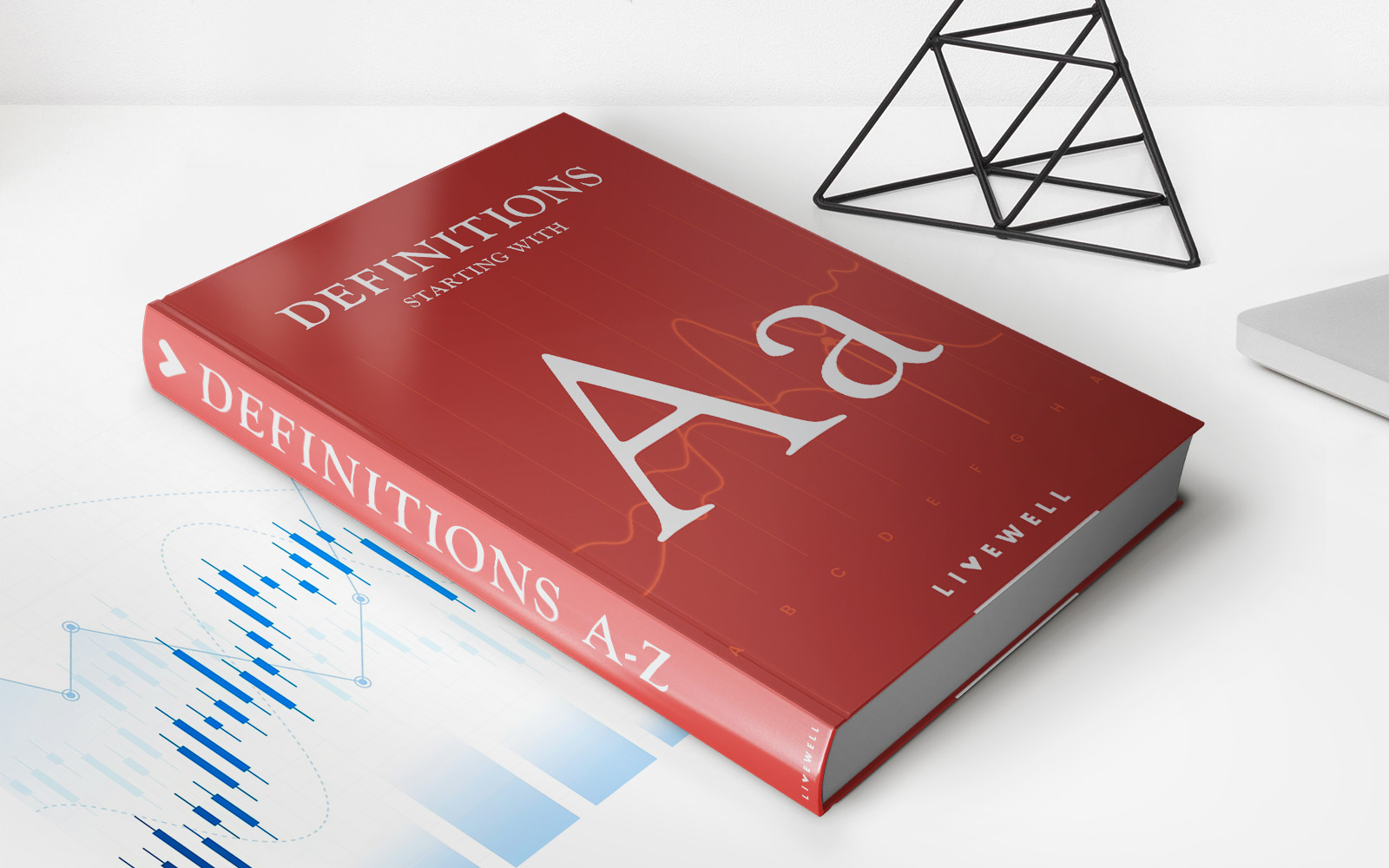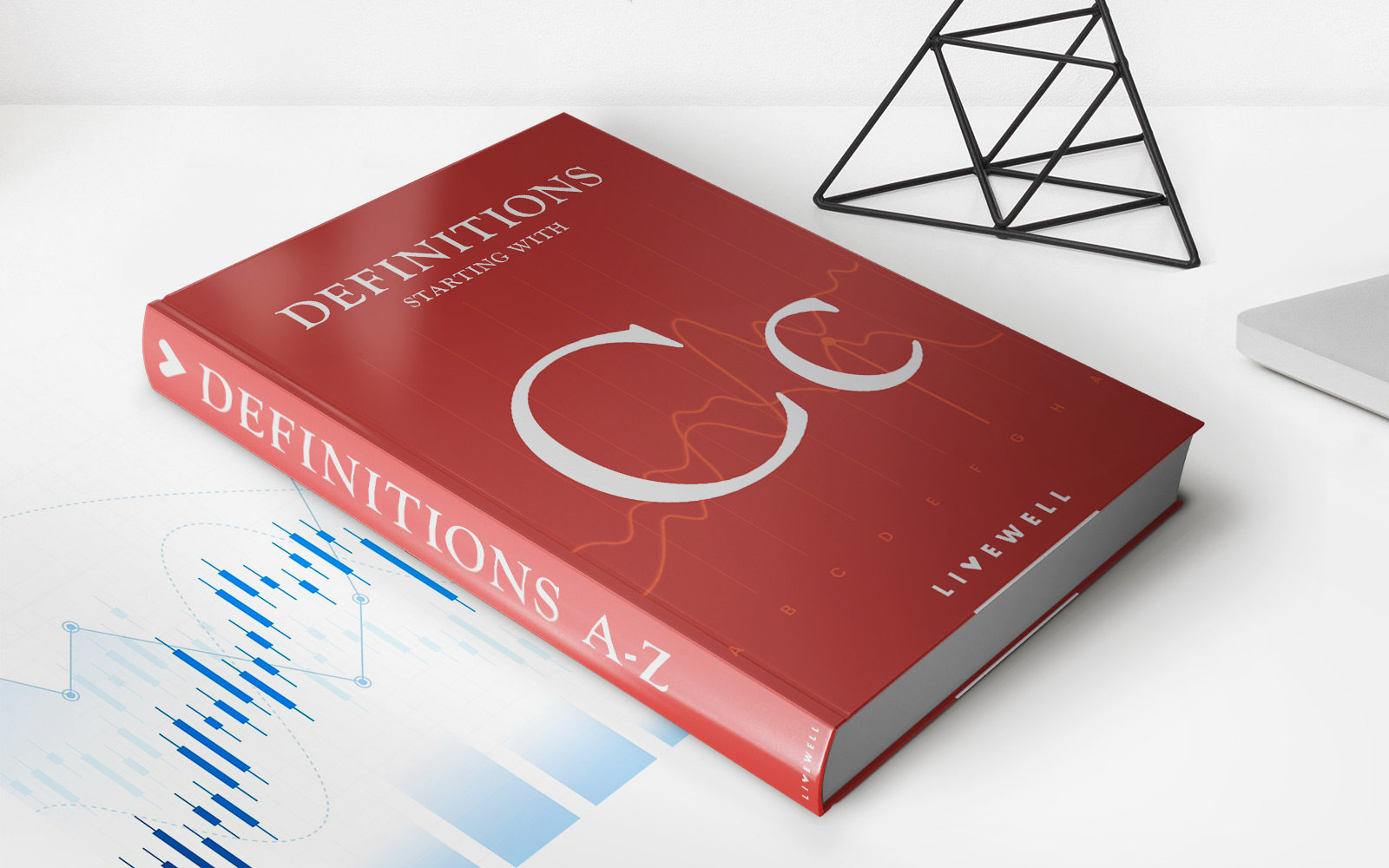

Finance
How To Save TDS On Fixed Deposits
Published: December 22, 2023
Learn how to save TDS on fixed deposits and optimize your finances. Find expert tips and strategies to minimize tax deductions and maximize your returns.
(Many of the links in this article redirect to a specific reviewed product. Your purchase of these products through affiliate links helps to generate commission for LiveWell, at no extra cost. Learn more)
Table of Contents
- Introduction
- Understanding TDS on Fixed Deposits
- Ways to Save TDS on Fixed Deposits
- Option 1: Submit Form 15G/15H
- Option 2: Split Your Fixed Deposits
- Option 3: Invest in Tax Saving Fixed Deposits
- Option 4: Invest in Joint Fixed Deposits
- Option 5: Utilize the Overall TDS Exemption Limit
- Option 6: Set off TDS against Other Tax Liabilities
- Option 7: Apply for a Lower TDS Deduction
- Conclusion
Introduction
When it comes to financial planning, fixed deposits have always been considered a safe and reliable investment option. They offer a guaranteed return and are relatively easy to manage. However, one aspect that often catches investors off guard is the TDS (Tax Deducted at Source) on the interest earned from fixed deposits.
Under the Income Tax Act, if the interest earned from fixed deposits exceeds a certain threshold, the bank is required to deduct TDS before crediting the interest to the investor’s account. This can be a major concern for individuals, especially those in higher tax brackets.
Thankfully, there are several ways to save TDS on fixed deposits, which can help maximize your earnings. In this article, we will explore some effective strategies that can help you reduce or even eliminate the impact of TDS on your fixed deposit interest.
By implementing these strategies, you can ensure that your hard-earned money grows without unnecessary tax deductions, allowing you to meet your financial goals more efficiently.
Understanding TDS on Fixed Deposits
Before diving into the ways to save TDS on fixed deposits, it’s essential to have a clear understanding of how TDS on fixed deposits works.
When you invest in a fixed deposit, the bank pays you a predetermined interest rate on your deposit amount. However, as per the Income Tax Act, if the total interest earned from fixed deposits in a financial year exceeds Rs. 40,000 (for individuals below 60 years of age) or Rs. 50,000 (for senior citizens), the bank is required to deduct TDS at the rate of 10% before crediting the interest to your account.
It’s important to note that even if your total income for the year falls below the taxable limit, the bank still deducts TDS on the interest earned from fixed deposits. However, you can claim a refund on the TDS amount while filing your income tax return, if your total income falls below the taxable limit.
Furthermore, if you have not provided your PAN (Permanent Account Number) details to the bank, the TDS deduction will be at a higher rate of 20%. Therefore, it is advisable to provide your PAN details to the bank to avoid higher TDS deductions.
Now that we have a basic understanding of how TDS on fixed deposits functions, let’s explore some effective strategies to save TDS and optimize your fixed deposit investments.
Ways to Save TDS on Fixed Deposits
While TDS on fixed deposits is a mandatory requirement, there are several strategies you can employ to minimize the impact of TDS and save on taxes. Let’s explore some of these effective ways to save TDS on fixed deposits:
- Submit Form 15G/15H: If you are below the age of 60 and your total income for the year is below the taxable limit, you can submit Form 15G to the bank. Similarly, if you are a senior citizen and your total income is below the taxable limit, you can submit Form 15H. These forms declare that you do not have any taxable income and hence, the bank will not deduct any TDS on the interest earned from your fixed deposits.
- Split Your Fixed Deposits: Another effective strategy is to split your fixed deposits across different banks or branches to stay within the threshold limit for TDS. By doing so, you can ensure that the interest earned from each deposit remains below the TDS limit, thereby avoiding TDS deductions.
- Invest in Tax Saving Fixed Deposits: Consider investing in tax-saving fixed deposits offered by banks. Under Section 80C of the Income Tax Act, investments made in these fixed deposits are eligible for a deduction of up to Rs. 1.5 lakh from your taxable income. This not only helps in saving tax but also allows you to grow your savings with the benefit of fixed deposit interest.
- Invest in Joint Fixed Deposits: Opting for a joint fixed deposit with a family member can help you reduce the impact of TDS. By doing so, the interest income is divided between the joint holders, effectively lowering the amount of interest earned by each person and keeping it below the TDS threshold.
- Utilize the Overall TDS Exemption Limit: Keep track of all your investments and income sources to ensure that you utilize the overall TDS exemption limit. If you have multiple sources of income, such as salary, rent, or business income, the TDS deducted on fixed deposits can be adjusted against the TDS deducted on other income streams.
- Set off TDS against Other Tax Liabilities: If you anticipate having tax liabilities for the financial year, you can request the bank to adjust the TDS deducted on your fixed deposit interest against those liabilities. This can help minimize the out-of-pocket tax payments and optimize your cash flow.
- Apply for a Lower TDS Deduction: If you believe that your total income for the year will be below the taxable limit, you can apply to the Income Tax department for a lower TDS deduction on your fixed deposit interest. Upon approval, the bank will deduct TDS at a lower rate or even exempt it completely.
By implementing these strategies, you can effectively save TDS on your fixed deposits, optimize your tax savings, and maximize your overall returns.
Option 1: Submit Form 15G/15H
Form 15G and Form 15H are self-declaration forms that you can submit to the bank to declare that your total income for the financial year is below the taxable limit. These forms help you avoid TDS on fixed deposit interest if you are eligible.
Form 15G: Individuals who are below the age of 60 and have an income below the taxable limit can submit Form 15G to the bank. By submitting this form, you declare that you do not have any taxable income, and hence, the bank will not deduct any TDS on the interest earned from your fixed deposits.
Form 15H: Senior citizens (those above 60 years of age) who have no taxable income can submit Form 15H to the bank. This form serves the same purpose as Form 15G, exempting senior citizens from TDS on fixed deposit interest.
It’s important to note that you need to submit these forms every year to the bank to ensure that TDS is not deducted on your fixed deposit interest. Additionally, you need to meet the eligibility criteria mentioned in the forms to be eligible for this exemption.
When submitting Form 15G/15H, ensure that all the necessary details are filled accurately, including your PAN details, fixed deposit account details, and the signature. Once submitted, the bank will process your request and exempt the TDS on interest payments if you meet the criteria.
Remember, if your total income for the year exceeds the taxable limit or you provide incorrect information in the form, it may lead to penalties, including payment of additional taxes. Thus, it is crucial to assess your income and eligibility carefully before submitting these forms.
Submitting Form 15G/15H can be a convenient way to avoid TDS on fixed deposit interest, especially if you fall below the taxable income threshold. Make sure to stay updated with the submission requirements and renew the forms annually to continue the benefit of exemption from TDS deductions.
Option 2: Split Your Fixed Deposits
An effective strategy to save TDS on fixed deposits is to split your deposits across different banks or branches. By doing so, you can ensure that the interest earned from each deposit remains below the TDS threshold, thereby avoiding TDS deductions.
When you split your fixed deposits, you divide your total investment amount into smaller deposits across multiple banks or branches. This helps to keep the interest earned on each deposit within the exemption limit for TDS. For example, if the TDS threshold is Rs. 40,000 and you have a total fixed deposit of Rs. 2 lakh, you can split it into five deposits of Rs. 40,000 each.
By splitting your fixed deposits, you can effectively save on taxes and optimize your returns. However, there are a few things to keep in mind:
- Choose Different Banks or Branches: It’s important to split your fixed deposits across different banks or branches to ensure that each deposit is treated as a separate entity. This way, the interest earned on each deposit will be considered individually for TDS purposes.
- Stay within the TDS Exemption Limit: When splitting your deposits, make sure that the interest earned on each deposit does not exceed the TDS exemption limit. This will help you avoid TDS deductions and maximize your interest earnings.
- Manage the Maturity Dates: Since each deposit is considered separate, ensure that you manage the maturity dates of each deposit accordingly. This will help you plan for liquidity needs and reinvestment opportunities without any hassles.
- Track and Report Your Income: Although splitting your fixed deposits can help save TDS, it’s important to accurately track and report the interest earned on each deposit while filing your income tax return. This will ensure compliance with tax regulations and avoid any penalties.
Splitting your fixed deposits can be a prudent strategy to manage TDS and optimize your returns. It provides flexibility and control over your investments, allowing you to stay within the exemption limits and minimize tax deductions. Be sure to consider the above points and consult with a financial advisor if needed to make informed decisions regarding splitting your fixed deposits.
Option 3: Invest in Tax Saving Fixed Deposits
If you want to save TDS on fixed deposits and also enjoy tax benefits, investing in tax-saving fixed deposits can be a smart move. Tax-saving fixed deposits are specifically designed to help individuals save on taxes while earning a fixed return on their investments.
Under Section 80C of the Income Tax Act, investments made in tax-saving fixed deposits are eligible for a deduction of up to Rs. 1.5 lakh from your taxable income. This means that the amount invested in these fixed deposits can be deducted from your total taxable income, thereby reducing your overall tax liability.
Here are some key points to consider regarding tax-saving fixed deposits:
- Tenure and Lock-in Period: Tax-saving fixed deposits usually have a lock-in period of 5 years. This means that the investment cannot be withdrawn before the completion of the lock-in period. It’s important to keep this in mind and align your investment horizon accordingly.
- Interest Rates: The interest rates offered on tax-saving fixed deposits are generally similar to regular fixed deposits. However, it’s advisable to compare the rates offered by different banks before making a decision. You can also consider opting for cumulative interest, where interest is reinvested and paid at maturity, to optimize your returns.
- Tax Deduction: The amount invested in tax-saving fixed deposits is eligible for a deduction of up to Rs. 1.5 lakh from your taxable income under Section 80C. This deduction can help reduce your tax liability and increase your disposable income.
- Risk and Safety: Tax-saving fixed deposits offered by banks are considered safe investments as they come with the assurance of the bank. It’s important to verify the credibility and reputation of the bank before investing.
- Taxation of Interest: The interest earned on tax-saving fixed deposits is taxable as per your income tax slab rate. The bank deducts TDS if the interest exceeds Rs. 40,000 (for individuals below 60 years of age) or Rs. 50,000 (for senior citizens) in a financial year.
Investing in tax-saving fixed deposits not only helps you save on taxes but also provides a fixed return on your investment. Consider your financial goals, risk appetite, and lock-in period requirements before making a decision. Consulting with a financial advisor can also help you make informed choices regarding tax-saving fixed deposits and optimize your tax savings.
Option 4: Invest in Joint Fixed Deposits
An effective way to save TDS on fixed deposits is by opting for a joint fixed deposit with a family member. Investing in joint fixed deposits can help you reduce the impact of TDS by dividing the interest income between the joint holders.
Here’s how investing in joint fixed deposits can help save TDS:
- Income Splitting: When you invest in a joint fixed deposit, the interest income earned on the deposit is divided between the joint holders. For example, if you invest in a fixed deposit jointly with your spouse, the interest income will be split equally between both of you. This can effectively help keep the interest earnings below the TDS threshold, thereby avoiding TDS deductions.
- TDS Exemption Limit: Each individual has their own TDS exemption limit. By distributing the interest income between joint holders, you can utilize the exemption limit of each individual, maximizing the total exemption and reducing the impact of TDS.
- Choose the Right Joint Holder: When investing in a joint fixed deposit, choose a joint holder who is in a lower tax bracket or already utilizing their TDS exemption limit. This can further optimize the TDS savings on the interest income.
- Benefit of Relationship: Investing in a joint fixed deposit with a family member not only helps save TDS but also strengthens family relationships. It allows you to jointly prioritize and plan your financial goals while maximizing your returns.
- Legal Documentation: Ensure that the joint fixed deposit is documented properly with all the necessary details of the joint holders. This helps establish the ownership and distribution of the interest income, ensuring a smooth process during maturity or in case of any disputes.
It’s important to note that the tax implications of joint fixed deposits may vary based on the overall income and tax status of the joint holders. Each individual should assess their own taxable income and consult with a tax advisor before making investment decisions.
Investing in joint fixed deposits can be a practical strategy to save TDS on fixed deposits, especially when the joint holders have varying income levels or are already utilizing their TDS exemption limits. Consider your financial circumstances, taxation implications, and relationship dynamics before opting for a joint fixed deposit to make an informed decision.
Option 5: Utilize the Overall TDS Exemption Limit
One strategy to save TDS on fixed deposits is by utilizing the overall TDS exemption limit set by the Income Tax Department. By considering all your sources of income, including salary, rental income, and business income, you can optimize your TDS savings on fixed deposit interest.
Here’s how you can utilize the overall TDS exemption limit effectively:
- Calculate your Total Income: Start by calculating your total income for the financial year from all sources. This includes your salary, rental income, business income, and any other income you may have. Make sure to account for all income streams to get an accurate picture of your overall income.
- Track TDS Deductions: Keep a record of the TDS deductions made on your salary, rental income, or any other income sources. This will help you keep track of the total TDS amount already deducted.
- Consider the TDS Exemption Limit: The exemption limit for TDS is determined based on your total income and tax slab rate. For example, if your total income falls within the exemption limit, you can claim a refund on the TDS deducted on your fixed deposit interest while filing your income tax return.
- Adjust TDS Deductions: If the TDS deducted on your fixed deposit interest exceeds the overall TDS exemption limit, you can adjust it against the TDS deductions made on your other income sources. This way, you don’t have to pay additional tax out of pocket.
- Proper Documentation: Make sure to maintain proper documentation of the TDS deductions made on your various income sources. This includes salary slips, rent receipts, and any other supporting documents needed to claim a refund or adjust TDS deductions.
By considering your overall income and utilizing the TDS exemption limit, you can optimize your TDS savings on fixed deposit interest. It’s important to stay organized with regards to your income and TDS deductions, keeping all necessary documents in place for smooth income tax return filing.
Consulting with a tax advisor can also provide valuable insights and help you effectively utilize the overall TDS exemption limit based on your specific financial situation.
Option 6: Set off TDS against Other Tax Liabilities
Another way to save TDS on fixed deposits is by setting off the TDS amount against other tax liabilities you may have. This option allows you to utilize the TDS deducted on your fixed deposit interest to reduce the tax payable for the financial year.
Here’s how you can set off TDS against other tax liabilities:
- Assess Your Tax Liabilities: Start by assessing your overall tax liabilities for the financial year. Consider all sources of income, deductions, and exemptions to determine your taxable income.
- Take Note of TDS Deductions: Keep track of the TDS deductions made on your fixed deposit interest. This information can be found in the Form 16A provided by the bank or Form 26AS available on the Income Tax Department’s website.
- File Your Income Tax Return: While filing your income tax return, report the TDS amount deducted on your fixed deposit interest. This is mentioned in the Form 16A or Form 26AS. By doing so, you can calculate the net tax payable after considering the TDS amount.
- Set off TDS against Tax Payable: If the TDS amount exceeds your tax liability, the excess can be set off against other tax payable, such as self-assessment tax or advance tax. This will help reduce the additional tax payment you need to make.
- Claim Refund, if Applicable: If the TDS amount exceeds your total tax liability, you can claim a refund for the excess TDS deducted. This can be done while filing your income tax return. Make sure to provide accurate bank account details for the refund process.
Setting off TDS against other tax liabilities can be a beneficial way to optimize your tax payments when it comes to fixed deposit interest. It reduces the burden of additional tax out of pocket and ensures that the TDS amount is effectively utilized to offset your tax liabilities.
It’s important to have proper documentation and accurate calculation of your total tax liabilities and TDS deductions to file your income tax return correctly. Seeking assistance from a tax advisor can provide you with valuable guidance and ensure compliance with tax regulations.
Option 7: Apply for a Lower TDS Deduction
If you anticipate that your total income for the financial year will be below the taxable limit, you can apply to the Income Tax Department for a lower TDS deduction on your fixed deposit interest. This option allows you to reduce or even exempt the TDS deduction, depending on your eligibility.
Here’s how you can apply for a lower TDS deduction:
- Assess Your Income: Start by assessing your projected total income for the financial year. Consider all sources of income, deductions, and exemptions to determine whether you fall below the taxable limit.
- Calculate TDS Deduction: Calculate the TDS deduction that would apply on your fixed deposit interest based on the prevailing rates. This will give you an idea of the potential savings if you qualify for a lower TDS deduction.
- Submit Form 13: To apply for a lower TDS deduction, you need to submit Form 13 to the Income Tax Department. This form is a request for lower or nil TDS deduction on your fixed deposit interest.
- Provide Supporting Documents: Along with Form 13, you may be required to provide supporting documents that demonstrate your eligibility for a lower TDS deduction. These documents may include details of your income, investments, and other relevant information.
- Wait for Approval: Once you have submitted the necessary documents, the Income Tax Department will review your application. If approved, you will receive a certificate specifying the lower TDS deduction rate or exemption.
- Submit the Certificate to the Bank: After receiving the certificate from the Income Tax Department, submit it to your bank where the fixed deposit is held. The bank will then adjust the TDS deduction based on the instructions provided in the certificate.
Applying for a lower TDS deduction can be a beneficial option if you meet the eligibility criteria. It allows you to retain a higher amount of your fixed deposit interest without the burden of TDS deductions.
It’s important to note that the Income Tax Department carefully evaluates the eligibility for a lower TDS deduction. Ensure that you provide accurate and authentic information along with supportive documents to maximize your chances of approval.
Consulting with a tax advisor can also provide valuable guidance throughout the process, ensuring that you meet all the necessary requirements and optimize your TDS savings on fixed deposits.
Conclusion
TDS on fixed deposits can sometimes be a concern for investors, especially those looking to maximize their returns and reduce tax liabilities. However, there are several effective strategies to save TDS on fixed deposits.
In this article, we explored different options to optimize your fixed deposit investments and minimize the impact of TDS:
- Submitting Form 15G/15H for individuals below the taxable limit
- Splitting your fixed deposits across different banks or branches
- Investing in tax-saving fixed deposits to avail tax deductions
- Opting for joint fixed deposits to divide interest income
- Utilizing the overall TDS exemption limit by tracking and adjusting TDS deductions
- Setting off TDS against other tax liabilities to minimize out-of-pocket payments
- Applying for a lower TDS deduction based on lower income projections
Each strategy has its own advantages and considerations. It’s important to assess your financial situation, income projections, and tax liabilities to determine the most suitable options for your needs.
Remember to consult with a tax advisor to ensure compliance with tax regulations and optimize your tax savings on fixed deposits. They can provide personalized guidance based on your specific circumstances and help you make informed decisions.
By implementing these strategies, you can effectively reduce or even eliminate the impact of TDS on your fixed deposit interest. This allows you to maximize your earnings and achieve your financial goals more efficiently.
However, it’s important to note that tax laws and regulations may change over time. Stay updated with the latest tax guidelines and consult with a professional advisor to ensure that you make informed financial decisions.














